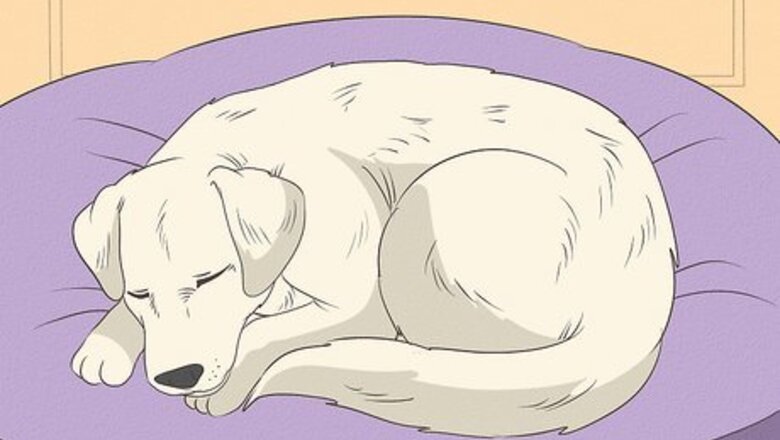
views
X
Research source
In this article, we’ll teach you everything you need to know about caring for your dog after the procedure so she can be as comfortable as possible and heal quickly.
- It typically takes between 10 and 14 days for a dog to fully recover from being spayed.
- For the first 12 hours after you bring her home, monitor your dog, offer water, and feed her light snacks (such as plain rice and cooked chicken breast) if she's hungry.
- Keep your dog as calm as possible (this means no playing, running, or jumping) until she’s fully healed to avoid tearing the incision or risking infection.
Home Care & Comfort
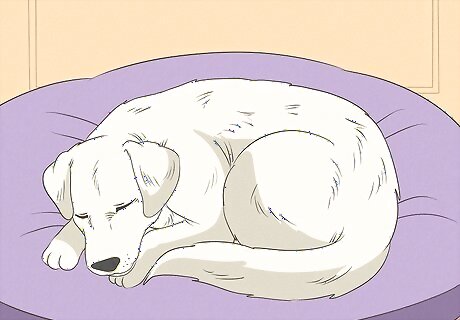
Stay home for at least 12 to 24 hours after your dog’s surgery. While it may not be necessary to watch your dog the entire time she's recovering, keep a close eye on her for the first day after surgery. Don’t plan on leaving the house or running errands for at least 12 hours, so you can help your dog with all her needs and stay by her side. If you don’t have a choice but to leave the house, have someone you trust watch and care for your dog. Note that some dogs may need your undivided attention for more than 24 hours. You know your dog best, so do what you can to make her the most comfortable, whether that means staying by their side or giving her more space. Typically, dogs can be left alone after their sutures have dissolved 10 to 14 days post-operation.
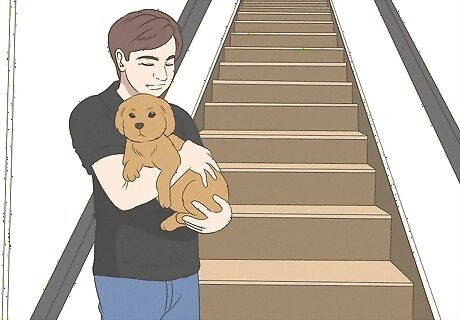
Carry small dogs in and out of cars and up and down steps. Right after surgery, your dog will likely be extremely lethargic and may have a hard time walking. This is completely normal as the anesthetic wears off. If your dog is small, carry her whenever she’d normally step or jump up. Hug your dog to your chest and avoid putting pressure or a hand on her incision. If you have a larger dog, consider setting up her recovery space in an area without steps so she doesn't have to climb. Place your dog in a carrier or crate (one large enough that she can stand and turn around) to ensure she doesn’t jump up on anything.
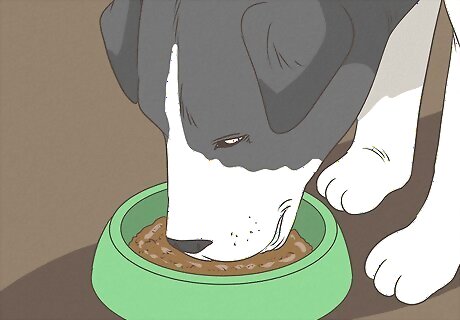
Feed your dog a small amount in the first 12 hours after surgery. Once the anesthetic starts to wear off, your dog may get hungry. If she does, offer her a smaller, light snack rather than her regular meal. The anesthetic can make your dog feel nauseous, and eating heavier, full-sized meals may cause her to get sick. So, opt for a small portion of boiled chicken with plain white rice. If your dog has special dietary needs, talk to your vet about the best way to feed them after surgery. Switching your dog back to her normal diet 24 hours after surgery is usually fine. Just make sure to watch your dog closely. If she throws up, contact your vet. Keep clean, fresh water near your dog at all times. This ensures that they won’t have to travel far to get a drink and will stay hydrated throughout recovery. Remember that it’s normal for a dog to not poop after surgery. However, if your pup hasn't gone to the bathroom in over 2 days, call your vet.
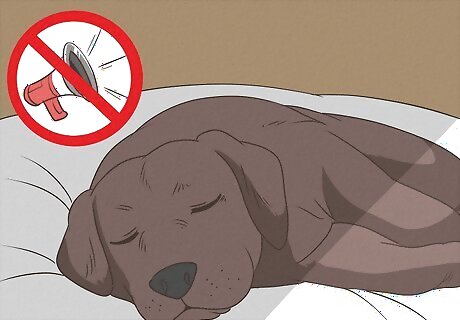
Keep your dog’s environment calm and quiet. Once your dog comes home, she’ll need all the peace, quiet, and rest she can to recover. So, turn down the TV and music and talk in a hushed tone. Avoid planning any extravagant parties, and keep the lights dim. Resist the urge to invite people over to see your dog. Seeing people outside of who she usually lives with may make her too excited and make it harder for her to rest.
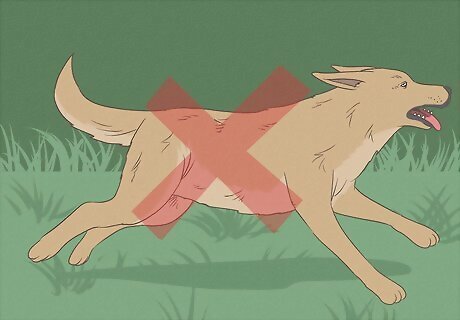
Prevent your dog from running, playing, and jumping. If your dog overexerts herself after surgery, it may cause her stitches to pop. Avoid playing with her in the first few days after the operation. Instead of running or playing fetch, opt for a simple puzzle or chew toys she can play with lying down. Consider putting up a child’s gate to prevent your dog from running throughout your room or going up and down stairs. Hide your dog’s toys away until she’s well enough to play with them. This way, she won’t be tempted. If you have other dogs, consider asking a friend to watch and play with them while your dog recovers. This way, they won’t be tempted to play with her, and she won’t feel left out. Talk to your vet if you have a hyperactive dog, as they can provide a personalized solution to how you can manage your dog’s energy during recovery.
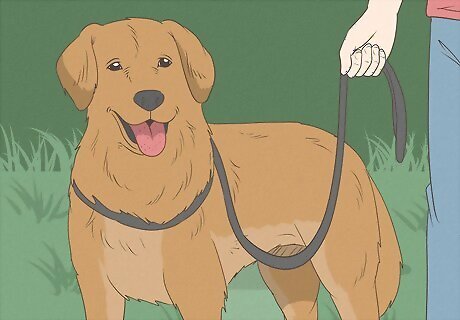
Keep your dog restrained when she needs to go to the bathroom. Take your dog into the yard on a collar and leash rather than letting her roam freely. Keeping her on a leash can help you restrain her and keep her from injuring herself if she sees something she wants to chase.
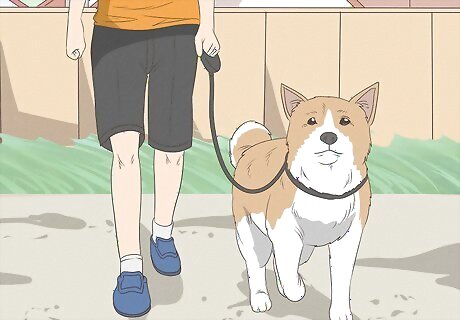
Keep your dog on a leash once you start walking her again. If your dog is going stir crazy and has lots of bottled up energy, check with the clinic to see if short walks here and there are okay. If they are, keep your dog on a short leash and take her for a short walk. Typically, vets advise waiting 3 to 4 days after the surgery to take your dog on gentle 5-minute walks.
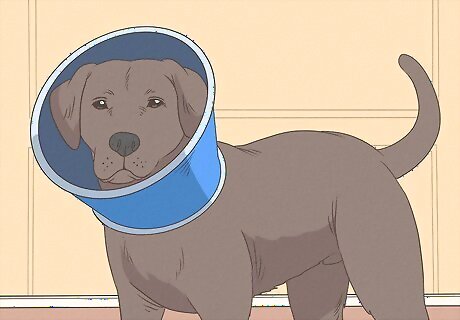
Get your dog an Elizabethan collar to keep her from licking the wound. One of the worst things your dog can do is lick her incision wound. While she’s only trying to help, her innocent licking can lead to infection or break the stitches. So, to prevent this, place a cone collar on her. Most vets will provide you with one after the surgery, but other collar variations can be purchased online. The narrow end of the collar should sit around your dog’s neck like a regular collar, and the wide end of the cone should project 2 to 3 in (5.1 to 7.6 cm) beyond the nose.

Put an old T-shirt on your dog if you have other dogs. If you have several dogs, any number of them might try to lick your recovering dog’s wound. To prevent this, find a T-shirt large enough to cover your dog’s whole body, down to where the incision was made. Have your dog wear the T-shirt for 10 to 14 days or until the incision is fully healed. Tie the t-shirt loosely around the waist if it’s too big for your dog, or consider cutting holes in the underside for her back paws to go through. Opt for a cotton T-shirt as these are the most breathable.
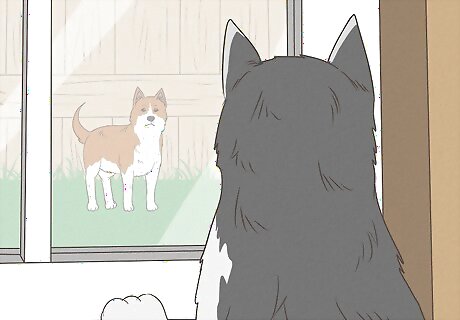
Avoid contact with male dogs for 8 to 10 days after the surgery. If your dog was in heat at the time of the surgery, make sure she stays away from male dogs for at least 8 days. She may still have the odor that attracts the opposite sex (despite not having reproduction organs). If a male dog tries to mount her, it could cause complications at the surgical site. Similarly, you may notice vaginal discharge a few days after surgery if your dog was in or near heat beforehand. This is entirely normal, but if it persists for more than 3 days, contact your vet.
Incision Care & Pain Management
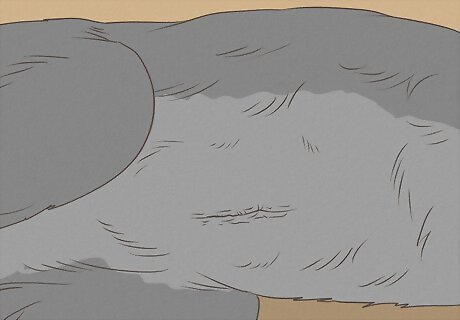
Check the incision every morning and evening. After your dog’s surgery, make sure to check their incision daily. Look at the incision, but don’t touch it. It’s normal for there to be a small amount of blood immediately after surgery, and some redness and swelling is expected. Keep the incision dry. Typically, the sutures used to close the incision will dissolve on their own, and wetting or cleaning the area can hinder the natural healing process.
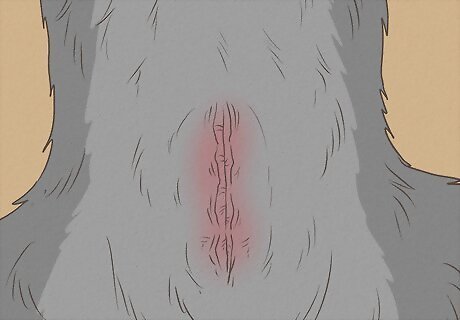
Look for signs of infection at the incision site, such as swelling and discharge. Be vigilant for signs of heat, swelling, or discharge from your dog’s wound. Contact the vet immediately if excessive amounts of blood or pus is leaking from the incision. These could be signs of an infection or complications. Typically, blood comes from small blood vessels leaking out into the fat layer beneath the skin rather than major internal hemorrhage; however, it’s always best to call your vet just to be sure. Likewise, pus is usually a sign of a superficial infection at or just beneath the skin rather than an infection tracking out of the abdomen; however, your dog may need antibiotics to settle the infection.
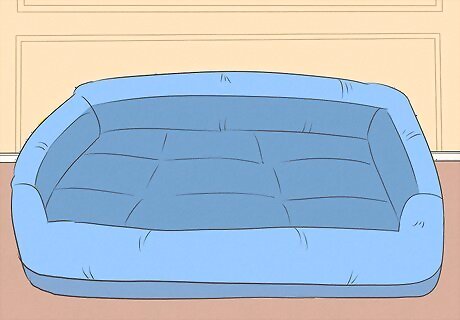
Make sure your dog’s bedding is clean. It’s vital that your dog’s incision site stays clean to avoid infection. If your dog’s wound is undressed and exposed to the air, make sure your dog sleeps on clean, dry bedding so that the wound doesn't get contaminated. This can lessen the risk of infection.
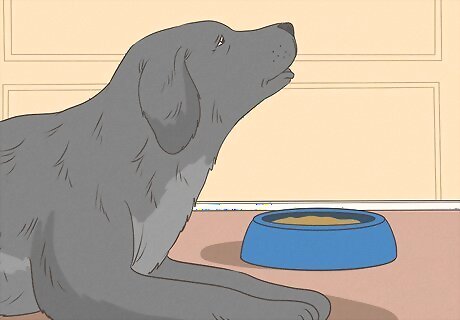
Look for signs that your dog is in pain, such as aggression or food aversion. Each dog reacts differently to pain. Some become vocal and whine, while others withdraw or become hostile. Keep an eye out for these signs of pain in your dog. If you notice any, contact your vet for a personalized solution to help your dog stay comfortable. Restlessness, such as pacing or sitting down and standing up again Whining or crying Tipped down ears or lowered head Aggressive behavior Not eating or drinking
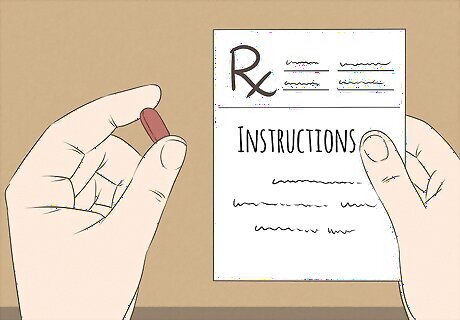
Give your dog painkillers if your vet prescribed them. As with any major surgical procedure, ensuring the patient is not in pain is important. Most clinics use a combination of painkillers (an opioid and a non-steroidal) on the day of surgery and send your dog home with an oral painkiller to continue taking at home. Follow your vet’s instructions on when and how long to give your dog their medicine. Keep in mind that some dogs are more sensitive than others. Typically, pain relief is required for 4 to 5 days post-operation, but your dog may need more or less time. Never use painkillers that aren’t prescribed by your vet, as this could put your dog’s health at risk.
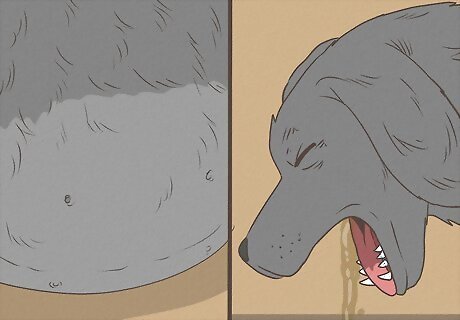
Contact your vet if you notice severe symptoms, like vomiting or trouble breathing. Usually, your vet will have you schedule a follow-up appointment for your dog 3 to 10 days after surgery. However, if you notice any of these symptoms before then, contact them immediately, as they may be signs of an underlying problem or infection: Not eating or drinking after 48 hours Discharge from the wound Consistent vomiting or diarrhea Weakness or lethargy Swollen tummy Difficulty breathing Inability to stand or wake up Difficulty urinating or defecating












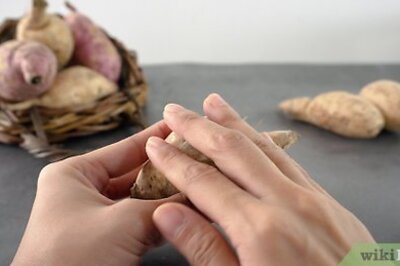

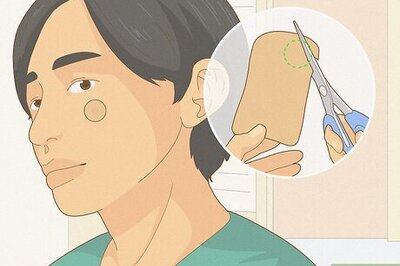




Comments
0 comment